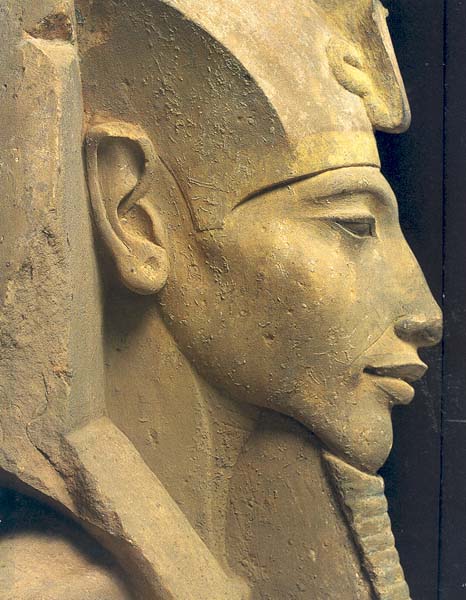Image Details

© 1999 Museum of Fine Arts, Boston/Photo by Sherif Sonbol
“You shall have no other gods before me” (Exodus 20:3). The first of the Ten Commandments (by conventional count), which the Bible says Moses brought down from his meeting with God on Mt. Sinai, was not a completely new idea in the ancient world. Pharaoh Amenhotep IV (1348–1338 B.C.), depicted in this colossal statue from Karnak in Upper Egypt, was a heretic by Egyptian standards. He declared that all the many Egyptian gods “had ceased” and that he would worship only the sun god, Aten. Amenhotep believed in one god who had created and ruled over all, but, unlike the faith of Israel, his faith centered on the person of the pharaoh, who was Aten’s only earthly intermediary. For this reason, Amenhotep decreed that he would henceforth be called Akhenaten, “One Who Is Effective for Aten.”
